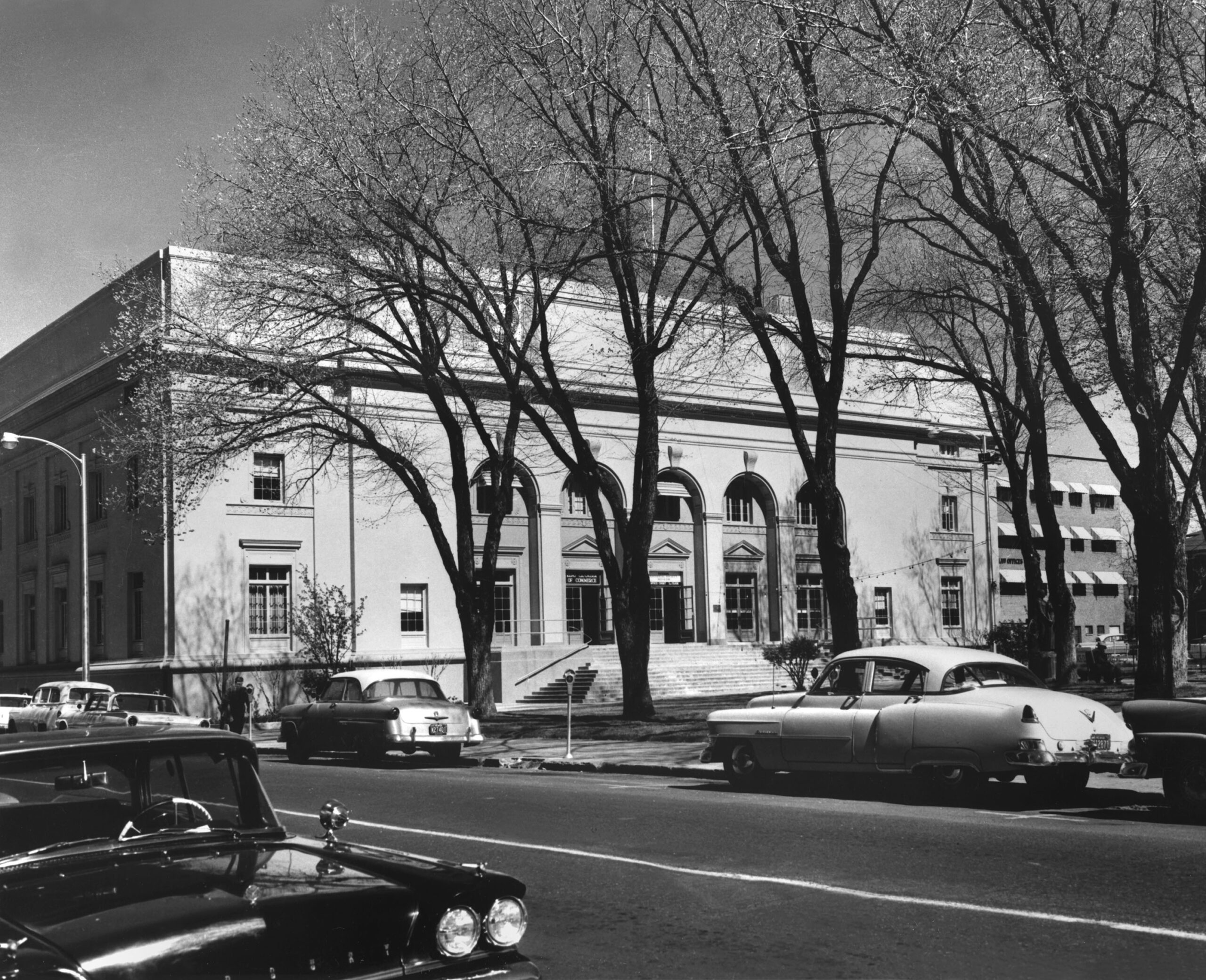NHS Collections
Photographs
The Nevada Historical Society has approximately 500,000 photographs dating from 1862 to the present. The collection covers the entire state, although its greatest strength is from Nye County north. There are unpublished catalogs for each county, as well as topical catalogs for such subjects as Lake Tahoe, transportation, the military and industry.
The collection is exceptionally strong for mining and mining town photographs, from nineteenth-century Virginia City to the early twentieth century boom towns such as Goldfield, Tonopah, and Rawhide, as well as a host of flamboyant but short-lived camps such as Dutch Creek, Weepah, and Wahmonie.
We also have more than 1,000 photographs of Nevada’s Native Americans (Paiute, Washoe, and Shoshone) and more than nine thousand photographs of early Reno. Boxing, ranching, early saloons, gambling and casinos, Hoover Dam, the Carson Mint, atomic testing, early parades, freight wagons, stages coaches, railroading and ghost towns can be mentioned as additional areas of significant coverage.
Artifacts
As the oldest museum in the State of Nevada, the Society’s museum artifact collection consists of many unique artifacts that encompass more than 15,000 artifacts and works of art, including paintings, objects related to the mining and ranching industries, clothing, and objects used in the daily lives of 19th and 20th century Nevadans. A wonderful collection of Nevada and Great Basin Native American basketry, pottery, and tools are collected.
In addition, the museum collections include numerous artifacts pertaining to Nevada’s gaming industry such as early slot machines, gaming cheating devices, neon signage, an extensive textile collection that includes Hello Hollywood Hello show-girl costumes, and souvenirs produced by casinos.
The museum artifact collection continues to actively seek objects for the permanent and educational collections. Collection materials of interest include textiles, Nevada art, decorative arts, household accessories including dishware, mining minerals and equipment, basketry, Nevada fossils, religious and ceremonial artifacts, toys, railroad objects, business and casino materials, military and fraternal equipment, and regalia.
Library
The library holdings include books, maps, pamphlets, newspapers, state documents, vertical files, various print collections, and ephemera related to Nevada and its history. Some of the library’s greatest assets are its different card catalogs (the Information File, the Territorial Enterprise index, and “Phil’s Cards”). Another resource that is available to researchers are the vertical files (also known as the clipping files), which consist of newspaper articles and materials about subjects and individuals. They are a great starting point when beginning any research.
The Historical Society also has an amazing map collection, which includes mining related maps, ditch maps, Sanborn insurance maps, state maps, and railroad company maps.
Some of the more unusual collections that are found in the library are the catalog collection, ranging from such topics as clothing, household goods, mining, and mortuary supplies, to name a few. We also have a large pamphlet collection, high school yearbooks from throughout the state, state telephone books, the first Nevada directory published in 1862, political posters, menus, a matchbook collection, calendar collections, and other interesting ephemera.
Manuscripts
Our manuscript holdings focus upon the Great Basin, Nevada, and the West and consist of over 3,000 collections. Collections range in size from a single item to several hundred cubic feet. The bulk of the materials date from the 1850s to the present and document the major events and activities which have shaped the state of Nevada throughout its history and development. Many of our collections relate to signature economic activities – mining, agriculture, gaming – or transportation, politics, and government.
Collection materials include the papers and records of individuals, businesses, churches, local governments, and schools, as well as civic, educational, charitable, professional, labor, and social organizations.

NHS’s second building on S. Virginia Street, 1950s. NHS was located in the historic State Building where the Pioneer Center is today.
